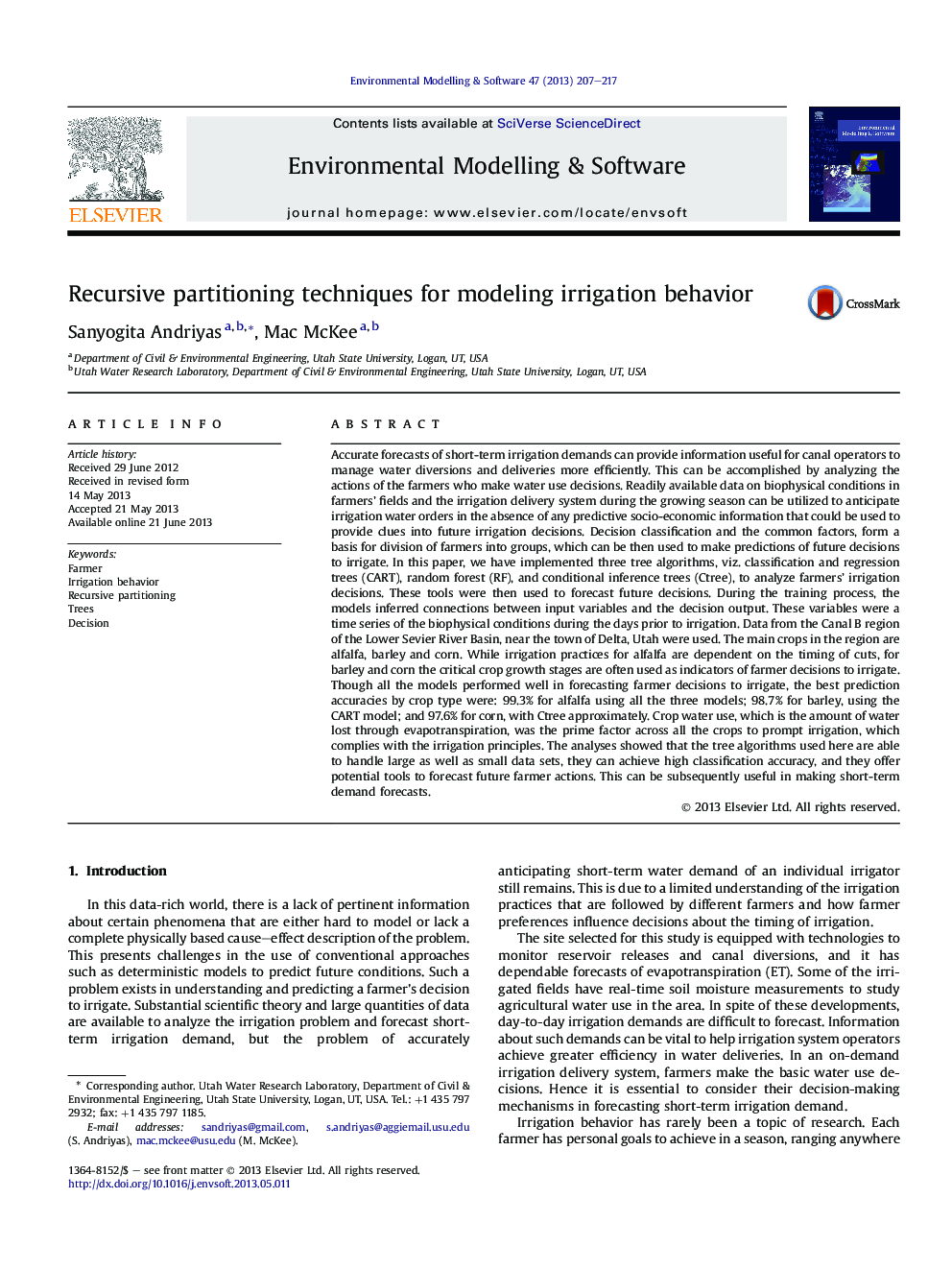| کد مقاله | کد نشریه | سال انتشار | مقاله انگلیسی | نسخه تمام متن |
|---|---|---|---|---|
| 6964288 | 1452303 | 2013 | 11 صفحه PDF | دانلود رایگان |
عنوان انگلیسی مقاله ISI
Recursive partitioning techniques for modeling irrigation behavior
ترجمه فارسی عنوان
تکنیک های پراکندگی مجدد برای مدل سازی رفتار آبیاری
دانلود مقاله + سفارش ترجمه
دانلود مقاله ISI انگلیسی
رایگان برای ایرانیان
کلمات کلیدی
مزرعه دار، رفتار آبیاری، پارتیشن بندی مجدد درختان، تصمیم گیری،
موضوعات مرتبط
مهندسی و علوم پایه
مهندسی کامپیوتر
نرم افزار
چکیده انگلیسی
Accurate forecasts of short-term irrigation demands can provide information useful for canal operators to manage water diversions and deliveries more efficiently. This can be accomplished by analyzing the actions of the farmers who make water use decisions. Readily available data on biophysical conditions in farmers' fields and the irrigation delivery system during the growing season can be utilized to anticipate irrigation water orders in the absence of any predictive socio-economic information that could be used to provide clues into future irrigation decisions. Decision classification and the common factors, form a basis for division of farmers into groups, which can be then used to make predictions of future decisions to irrigate. In this paper, we have implemented three tree algorithms, viz. classification and regression trees (CART), random forest (RF), and conditional inference trees (Ctree), to analyze farmers' irrigation decisions. These tools were then used to forecast future decisions. During the training process, the models inferred connections between input variables and the decision output. These variables were a time series of the biophysical conditions during the days prior to irrigation. Data from the Canal B region of the Lower Sevier River Basin, near the town of Delta, Utah were used. The main crops in the region are alfalfa, barley and corn. While irrigation practices for alfalfa are dependent on the timing of cuts, for barley and corn the critical crop growth stages are often used as indicators of farmer decisions to irrigate. Though all the models performed well in forecasting farmer decisions to irrigate, the best prediction accuracies by crop type were: 99.3% for alfalfa using all the three models; 98.7% for barley, using the CART model; and 97.6% for corn, with Ctree approximately. Crop water use, which is the amount of water lost through evapotranspiration, was the prime factor across all the crops to prompt irrigation, which complies with the irrigation principles. The analyses showed that the tree algorithms used here are able to handle large as well as small data sets, they can achieve high classification accuracy, and they offer potential tools to forecast future farmer actions. This can be subsequently useful in making short-term demand forecasts.
ناشر
Database: Elsevier - ScienceDirect (ساینس دایرکت)
Journal: Environmental Modelling & Software - Volume 47, September 2013, Pages 207-217
Journal: Environmental Modelling & Software - Volume 47, September 2013, Pages 207-217
نویسندگان
Sanyogita Andriyas, Mac McKee,
